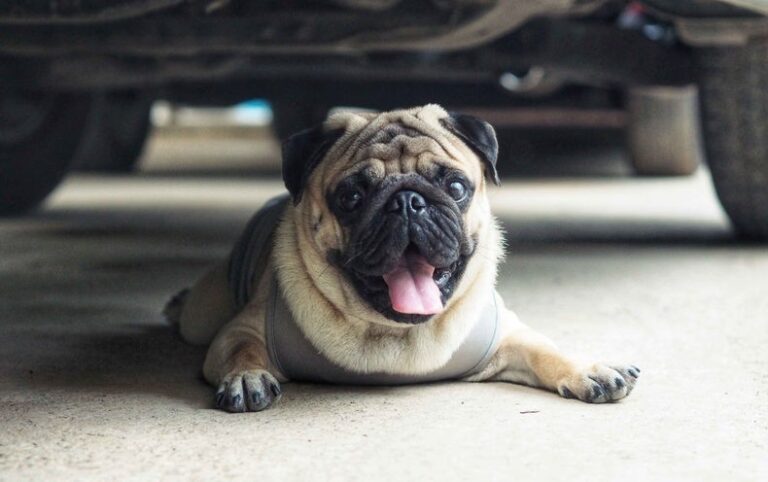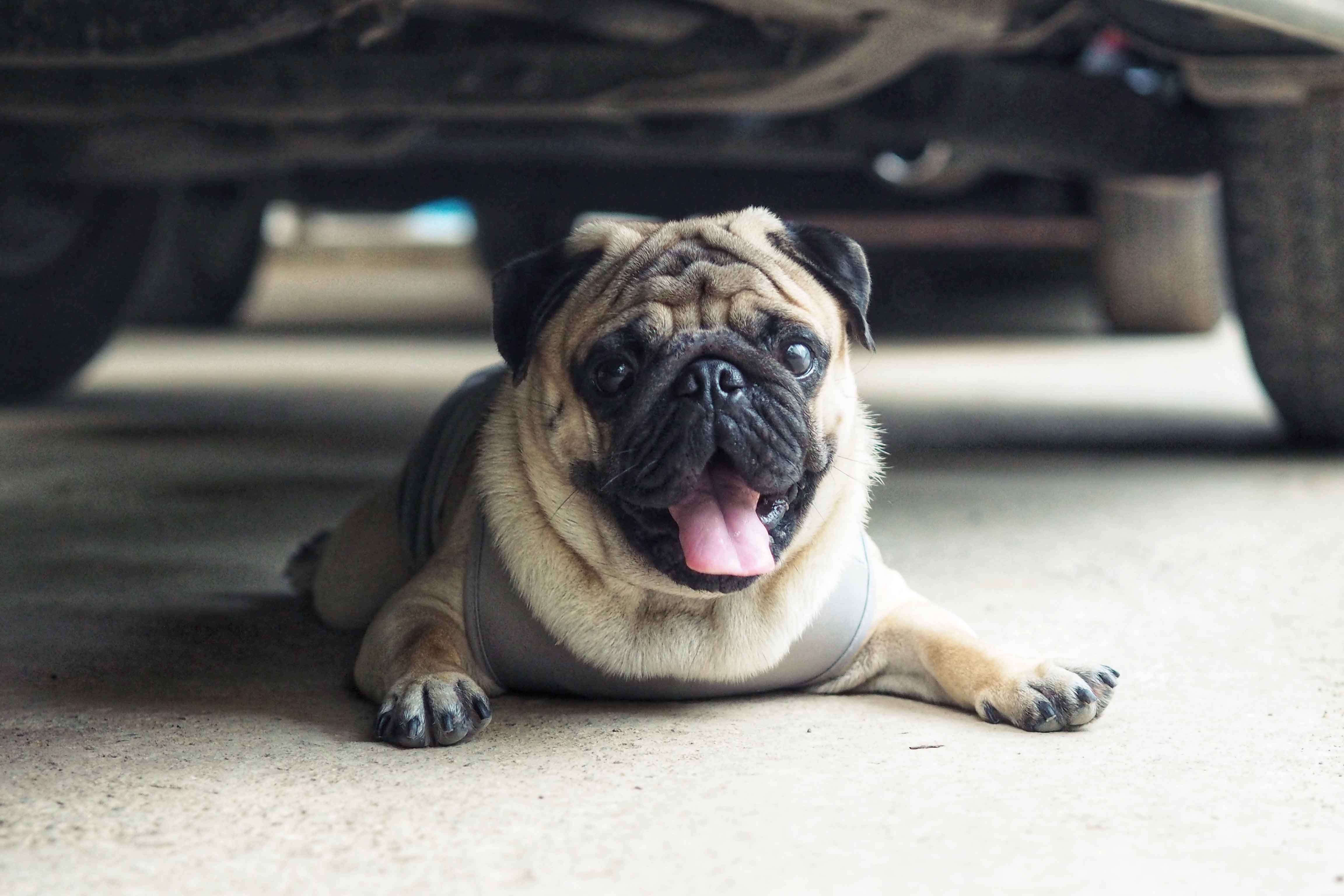
[ad_1]

Panting, increased grooming, a dip in the lake. All of these measures are what pets use to cope with a prolonged heat spell. Animals have evolved their own methods to cool off. In the wild, all of this works well. Pets, however, depend on the help of their owners to gain access to these relief measures. Such concerns are highlighted by increasingly frequent heat waves, such as the one that has seen temperatures in Sacramento, Calif., climb above 110 degrees Fahrenheit (43 degrees Celsius) in early September—and the blistering July temperatures that beset places as far afield as the United Kingdom and China.
Veterinarian Michael Leschnik from the University Clinic for Small Animals in Vienna, Austria, explains here what dogs, rabbits and the like need when exposed to intense heat.
[An edited transcript of the interview follows.]
At temperatures of up to 37 degrees C (99 degrees F), we humans work up quite a sweat, and for some this is very stressful. How do pets cope?
Heat is also exhausting for them. Unlike us, however, most of them can’t sweat.
Why is sweating important when it’s warm?
When we sweat, the heart pumps more blood through the body, the blood vessels and pores of the skin dilate, and the sweat produced by the sweat glands comes out. When it evaporates, it helps us maintain a constant core body temperature. Dogs and cats also have sweat glands on the balls of their feet, but these are not sufficient. Pigs and rabbits, on the other hand, have no ability to sweat at all.
What strategies do animals use instead?
They vary. Many pant, first and foremost. The rapid breathing motion causes the throat to produce saliva, and the evaporation cools. The body also releases heat via exhalation and the nasal secretions produced by panting. This is particularly visible in dogs, but birds and cats can also pant. But this breathing technique is strenuous and causes the animals to expend more energy.
So panting regulates the internal body temperature only for a short time?
Other methods are needed. Cats, for example, increasingly lick their fur. This makes it damp and the evaporation brings cooling. Most animals also like to take a bath, look for a place in the shade, shift physical activities to the morning and evening hours, and drink more than usual. Basically the same strategies as for us humans.
Why is rest so important for us and animals?
Exercise causes the body to produce heat. To avoid overheating, the body then has to dissipate it, and that costs energy. Most animals therefore instinctively retreat in the heat. Only dogs don’t find this so easy.
What distinguishes dogs from other animals in this respect?
Their close relationship with humans. Strong domestication has deprived them of many of their instincts. If I go jogging with my dog in 37-degree-C weather or let the animal run alongside my bicycle, he’ll go along with it. This is because dogs are designed to follow their owner or owner’s lead. This is why there are always dogs that collapse even though there is a lake nearby.
Does this have to do with their domestication?
The animals I’m talking about don’t chill in the shade or splash in the water, but are kept busy by their mistress or master for hours retrieving a Frisbee. A few jumps into the water no longer compensate for the heat that their bodies produce through the movement and high temperatures. Neither the dogs nor their owners realize that they need a break. With cats it’s different: they are no longer lions, but they have largely retained their instincts; it’s difficult to motivate them to play in the blazing sun. The same applies to rodents or birds.
Speaking of which, what about guinea pigs, mice and rabbits? How do they deal with heat?
They too, need rest, shade and plenty of fluids. Instead of panting, some of them also use their ears. These are equipped with a network of fine blood vessels. In hot temperatures, the vessels dilate and thus dissipate heat. Unlike dogs and cats, rodents are often kept in cages or outdoor enclosures. If this occurs during the day directly in the sun without recourse to a shady retreat, cooling over the ears or increased drinking is not enough. Then these animals are also in danger of overheating. The same applies to birds and fish. It helps to cover parts of enclosures or aquariums with a cloth.
So anyone who keeps a pet should make sure that cages are in the shade?
And keep in mind the course of the sun. After all, it moves throughout the day, changing the intensity of the sun’s rays. Sometimes it helps to cover parts of the animals’ enclosures or aquariums with a cloth. In addition, with fish, the water must always be controlled: If the temperature rises too much, it is important to add cool water. This is because the heat also reduces the oxygen content. This triggers stress, and in extreme cases the animals lack the oxygen they need to breathe.
Does it also depend on the breed whether the heat is difficult for a dog or cat?
Pugs, bulldogs and Persian cats have a particularly hard time. Through breeding, their skulls, especially the nose and upper jaw, have been shortened more and more. Adult animals keep their childlike snub nose. The result is narrowed nostrils and nasal cavities, a lengthened and thickened soft palate, and changes in the larynx, which lead to breathing problems in many. This makes it difficult for animals to regulate their body temperature by panting. Increased risk also exists for pets that are quite old, have diseases such as diabetes or heart problems or are overweight. This is because subcutaneous fat cannot conduct heat well, making thermoregulation more difficult. Overall, there is basically no difference from what happens to us humans.
What about animals that have a lot of fur, like longhaired cats? Do they suffer more than others?
Not necessarily. Due to the air circulation between skin and fur, longer hair sometimes even has a cooling effect. In addition, the hair protects against sunburn. However, it can be helpful to regularly remove the undercoat, the hair that lies closer to the body, by brushing.
What else can you do to help pets through hot summers?
Walk your dog in the cool morning and evening hours. The same goes for dog training sessions. Similar to birds, dogs also enjoy a bathing opportunity, and some like to be gently showered with lukewarm water from a spray bottle. Rodents can be given a second water bottle to hang in their cage and offered more fresh green food. There is additional water in lettuce, cucumber and peppers. Animals that are fed wet food, such as cats, should be offered small portions, as this food spoils quickly in the heat. It’s also very important not to leave animals in the car when it is hot, which unfortunately happens again and again.
In the blazing sun, temperatures in the car quickly rise to more than 70 degrees C (158 degrees F). A window opened ajar and a small bowl of water are then no longer sufficient for thermoregulation, nor is panting. Animals, usually dogs, can thus quickly get heatstroke.
What exactly happens during heatstroke?
Due to the rising body temperature, an animal’s metabolism is stimulated more and more and becomes increasingly overloaded. From a body temperature of 42 degrees C (108 degrees F), vital proteins are also destroyed and the metabolism ultimately breaks down. This leads to multiple organ failures, which in many cases can occur only after one or two days.
What can owners do in case of heatstroke?
Common symptoms are increased salivation, balance disorders, vomiting, diarrhea and even unconsciousness. When these occur, they need to bring the animal into the shade, offer it water and cool it with cold towels. Often the animal also needs a vet, sometimes even a stay in the hospital. These first aid measures should be familiar to everyone who has an animal.
Is there any other tip you would like to give to people with animals?
Think about what is good for you in the heat. Maybe that will also suit your dog or your budgie. Because when it comes to dealing with heat, most animals are more like us than we think. If you’re not sure, ask your veterinarian.
[ad_2]